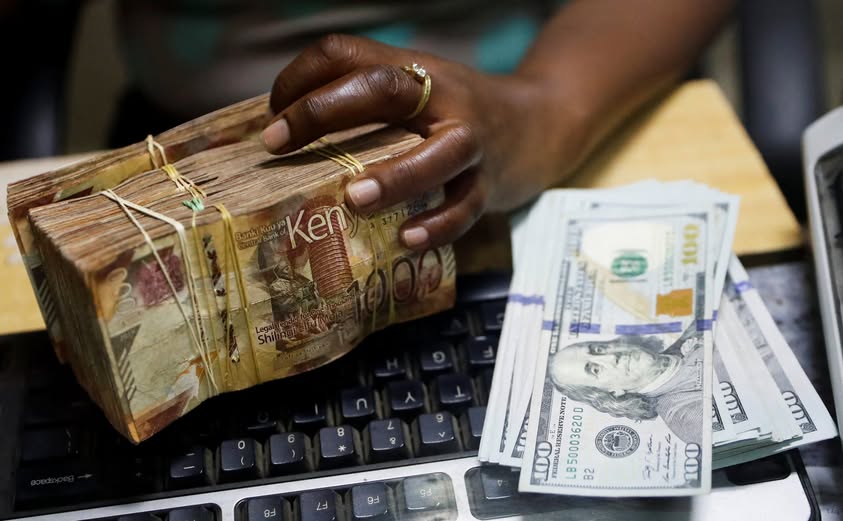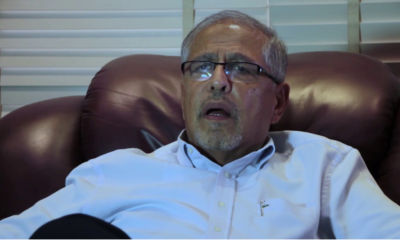Economy
Only 125 Kenyans Now Hold More Wealth Than 43 Million Others, Oxfam Report Shows
The average Kenyan worker is earning less in real terms, with wages shrinking by 11 percent as inflation continues to erode purchasing power.

Kenya’s inequality crisis has reached its most alarming level yet. According to a new report by Oxfam Kenya, only 125 individuals now own more wealth than 42.6 million Kenyans combined, a staggering reflection of the country’s widening economic divide.
The report titled Kenya’s Inequality Crisis: The Great Economic Divide shows that nearly half of Kenyans survive on less than Sh130 a day. Since 2015, an additional seven million people have fallen into extreme poverty, despite years of economic growth and government promises to expand opportunity.
Oxfam links the deepening crisis to rising living costs, a regressive tax system and chronic underfunding of essential public services.
Food prices are currently 50 percent higher than they were in 2020.
The average Kenyan worker is earning less in real terms, with wages shrinking by 11 percent as inflation continues to erode purchasing power.
The report highlights a stark pay gap within Kenya’s labour market. A chief executive officer in one of the country’s top ten companies earns 214 times more than a public school teacher. This imbalance, Oxfam says, has allowed wealth to accumulate at the top while ordinary households struggle to afford basic needs.
Debt servicing remains one of the biggest drains on Kenya’s finances. In 2024, the government spent Sh68 out of every Sh100 collected in taxes on repaying debt. This amount was twice the education budget and almost fifteen times what was allocated to healthcare. As a result, investment in public services has sharply declined. Primary school spending per pupil is now only 18 percent of what it was in 2003. Children from the poorest families receive nearly five fewer years of schooling than those from wealthier backgrounds.
Healthcare access is equally strained. Only four million Kenyans actively contribute to the Social Health Insurance Fund, and just 20 percent of the money collected reaches public health facilities. Most funds flow to private providers even though the majority of Kenyans depend on public hospitals.
The report also exposes deep gender inequality. Kenyan women earn about 65 percent of what men earn and are significantly disadvantaged in property ownership. They perform most unpaid care work, including childcare and home responsibilities, which limits their ability to participate in the workforce. According to Oxfam, this gender gap intensifies poverty and reduces economic mobility for millions of women and girls.
Oxfam traces much of today’s inequality to Kenya’s historical and structural foundations. Colonial-era land allocation, elite capture of political systems and persistent exclusion of rural and low-income communities have created long-standing barriers that continue to shape economic outcomes.
Oxfam Kenya Executive Director Mwongera Mutiga described the situation as a crisis created by choices rather than circumstance. He said inequality has grown because of unfair policies and consistent political inaction. Mutiga called on leaders to embrace bold reforms, including progressive taxation, increased funding for public education and healthcare, job creation initiatives and stronger land justice measures.
The report also shows that food insecurity has worsened dramatically. Between 2014 and 2024, at least 17 million Kenyans experienced moderate to severe food shortages. Inflation has hit low-income households hardest. In Nairobi, the impact on poor households was 27 percent higher than on wealthier families between 2020 and 2024.
Social protection remains weak. Only nine percent of Kenyans are covered by government support programmes. The Inua Jamii cash transfer reaches 1.9 million beneficiaries, yet the monthly Sh2,000 payment has not increased to match rising living costs.
Oxfam warns that unless urgent action is taken, Kenya will face rising levels of poverty, exclusion and instability. The report argues that reducing inequality by two percent every year, combined with sustained economic growth, could triple the rate of poverty reduction.
The organisation says a fairer and more equal Kenya is possible if the government prioritises equity, strengthens public services and ensures wealth is shared more broadly rather than concentrated among a small elite. According to Oxfam, achieving this will require political will, courageous leadership and a commitment to policies that put people before profit.
Kenya Insights allows guest blogging, if you want to be published on Kenya’s most authoritative and accurate blog, have an expose, news TIPS, story angles, human interest stories, drop us an email on [email protected] or via Telegram
-

 Investigations2 weeks ago
Investigations2 weeks agoHow Land Grabbing Cartels Have Captured Ardhi House
-

 Business2 weeks ago
Business2 weeks agoPanic As Payless Africa Freezes With Billions of Customers Cash After Costly Jambopay Blunder
-

 News3 days ago
News3 days agoTemporary Reprieve As Mohamed Jaffer Wins Mombasa Land Compensation Despite Losing LPG Monopoly and Bitter Fallout With Johos
-

 News2 weeks ago
News2 weeks agoSCANDAL: Cocoa Luxury Resort Manager Returns to Post After Alleged Sh28 Million Bribe Clears Sexual Harassment and Racism Claims
-

 Investigations1 week ago
Investigations1 week agoHow SportPesa Outfoxed Paul Ndung’u Of His Stakes With A Wrong Address Letter
-

 Investigations3 days ago
Investigations3 days agoFrom Daily Bribes to Billions Frozen: The Jambopay Empire Crumbles as CEO Danson Muchemi’s Scandal-Plagued Past Catches Up
-

 Sports2 days ago
Sports2 days ago1Win Games 2025: Ultimate Overview of Popular Casino, Sports & Live Games
-

 Business3 days ago
Business3 days agoHass Petroleum Empire Faces Collapse as Court Greenlights KSh 1.2 Billion Property Auction
















